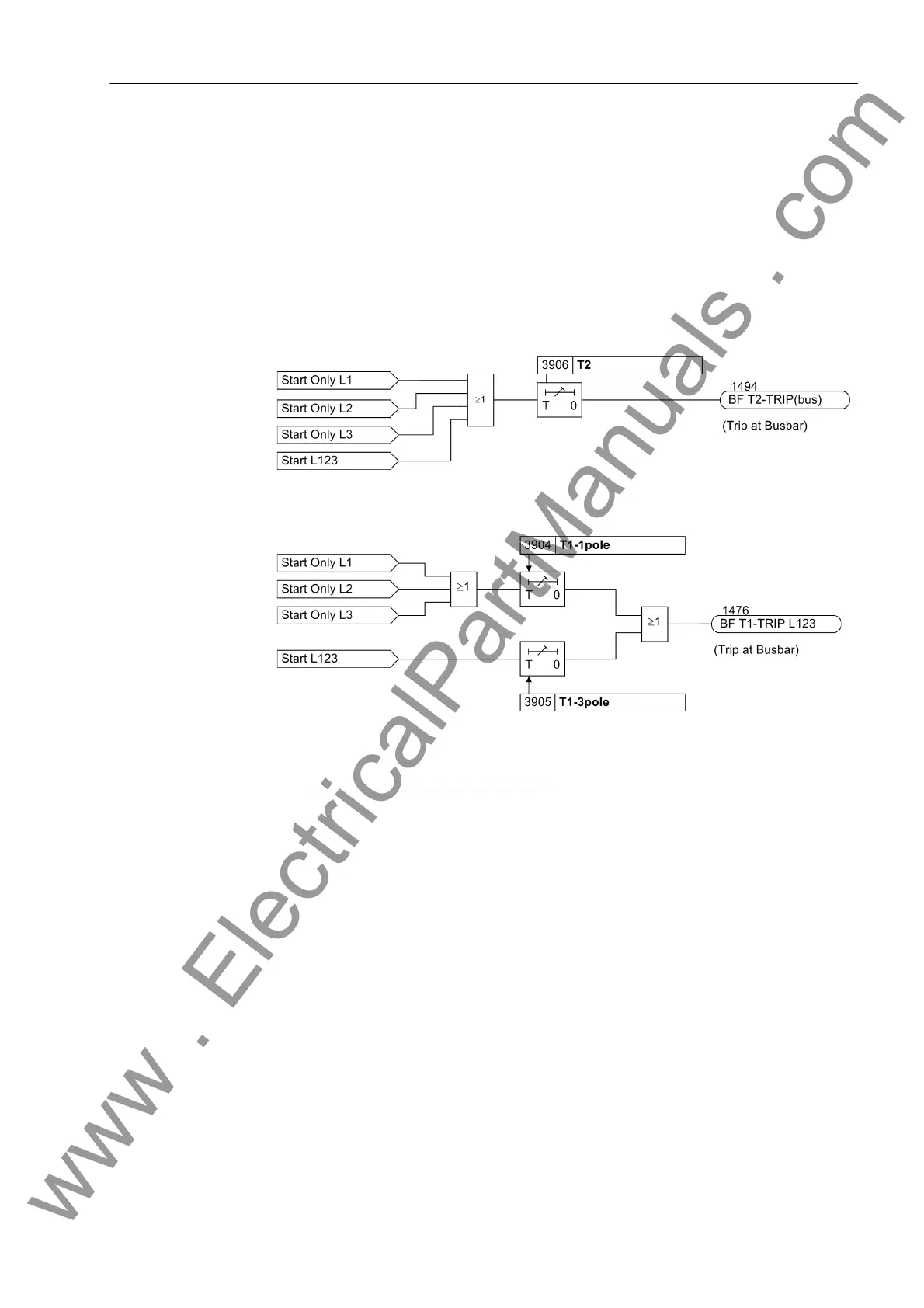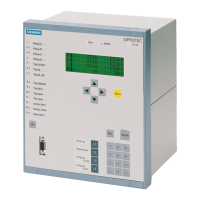2.20 Circuit Breaker Failure Protection
365
7SD5 Manual
C53000-G1176-C169-1
feeder under consideration is connected. The possible initiation conditions for the
breaker failure protection are those discussed above. Depending on the application of
the feeder protection, common phase or phase segregated initiation conditions may
occur. Tripping by the breaker failure protection is always three-pole.
The simplest solution is to start the delay timer T2 (Figure 2-152). The phase-segre-
gated initiation signals are omitted if the feeder protection always trips three-pole or if
the circuit breaker is not capable of single-pole tripping.
If different delay times are required after a single-pole trip or three-pole trip it is possi-
ble to use the timer stages T1-1pole and T1-3pole according to Figure 2-153.
Figure 2-152 Single-stage breaker failure protection with common phase initiation
Figure 2-153 Single-stage breaker failure protection with different delay timers
With two-stage breaker failure protection, the trip command of the feeder protection is
usually repeated, after a first time stage, to the feeder circuit breaker, often via a
second trip coil or set of trip coils, if the breaker has not responded to the original trip
command. A second time stage monitors the response to this repeated trip command
and trips the breakers of the relevant bus-bar section, if the fault has not yet been
cleared after this second time.
For the first time stage, a different time delay T1-1pole can be selected for a single-
pole trip than for a three-pole trip by the feeder protection. Additionally, you can select
(parameter 1p-RETRIP (T1)) whether this repeated trip should be single-pole or
three-pole.
www . ElectricalPartManuals . com

